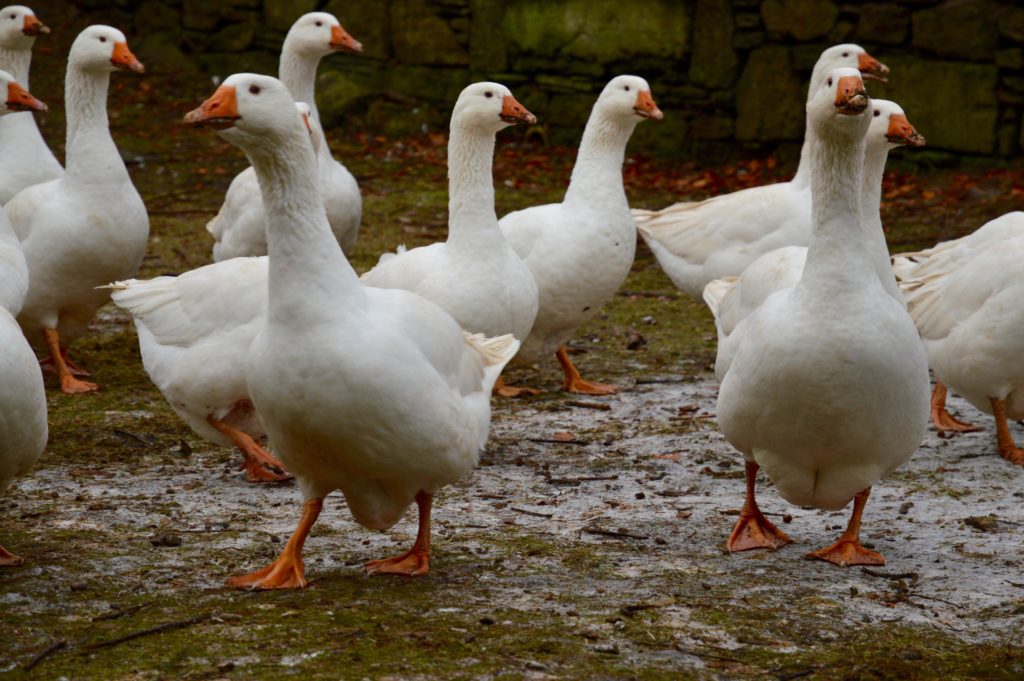
I have recently written a piece for Spectator Life on why goose are back in fashion this Christmas – following the news Theresa May favours goose over turkey. Here is a photo story about how I plucked and gutted my own goose for Christmas, making sure to save the fat for the roast potatoes – just like our Prime Minister likes them.
Last year I wrote about processing turkeys for The Spectator. This year I joined a team from Queen Margaret University Gastronomy Course to help process 21 geese on a farm in Angus. Like many smallholders, the farmer raises geese to give as gifts during the festive season or to barter for other meat. The geese are a white strain of the domestic Embden geese and live on grass in the summer and grain in the winter. Come Christmas, the farmer relies on a group to help dispatch, pluck and gut the geese.
As an enthusiastic bunch of foodies, the team from QMU were eager to barter labour for a share of free-range goose. They also wanted to learn some basic poulterer skills. We all wanted to see how free-range birds are raised in comparison to intensively-farmed turkey. I’m not saying everyone should pluck a goose or turkey at Christmas, but as I argued in The Ethical Carnivore, learning where it comes from not only forces you to take responsibility but makes the meat taste better.
Just like my experience helping to process turkeys, I found it a strangely festive affair. It is noisy, exhausting and smelly work. But it is also an opportunity for social bonding and to discuss the animal you will feast on in a few days. At the end of it all, it feels like you have truly earned your Christmas dinner. As Nadine Pierce, who kindly let me use some of her photos in this blog, described it, it is a weirdly ‘intimate and insane experience’.
Apologies if some readers find these images too graphic. Do please comment as usual.
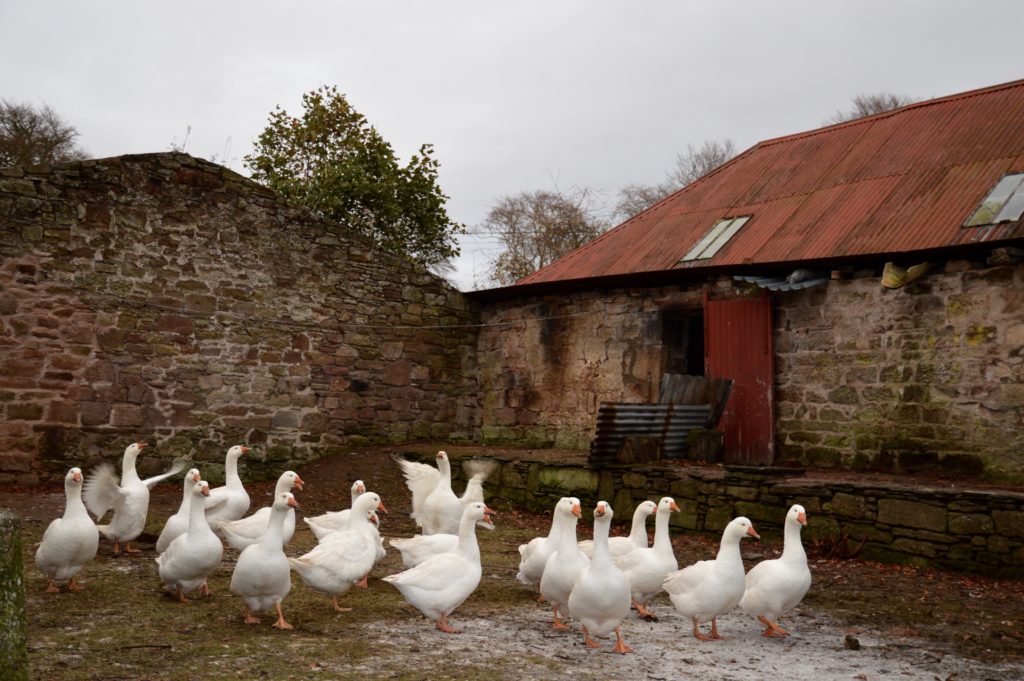
The geese are brought onto the farm as one-day old goslings. They spend the summer free-range grazing grass and eat grain in the winter.
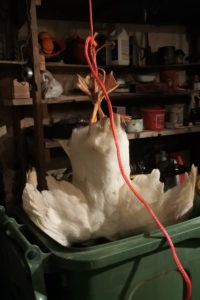
After being dispatched on the farm, the geese are bled overnight
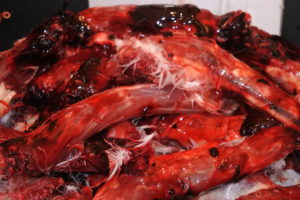
The necks are kept for roasting. Nothing is wasted. The blood is collected to be mixed with cream and made into bouda. The feet and heads are kept for dog food.
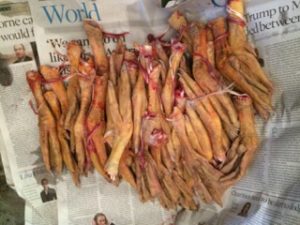
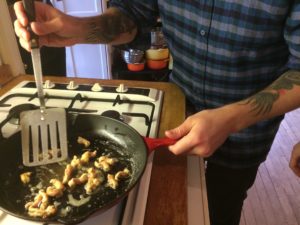
We even ate the tongues!
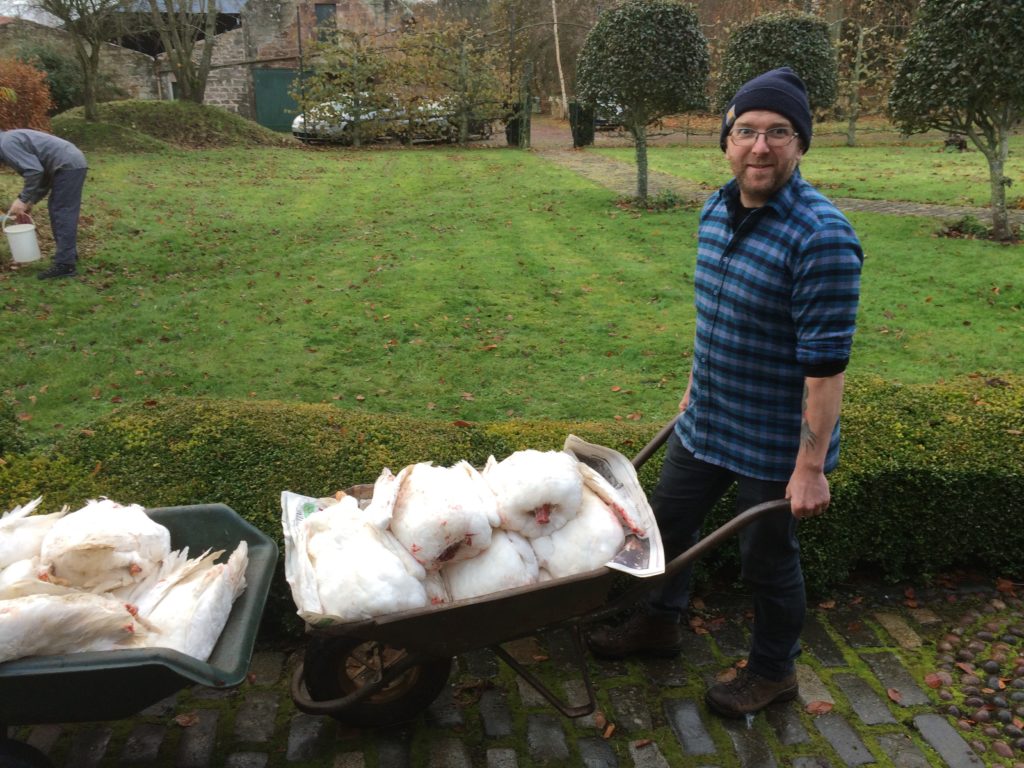
The next day the geese were processed by a team from Queen Margaret University Gastronomy Course.
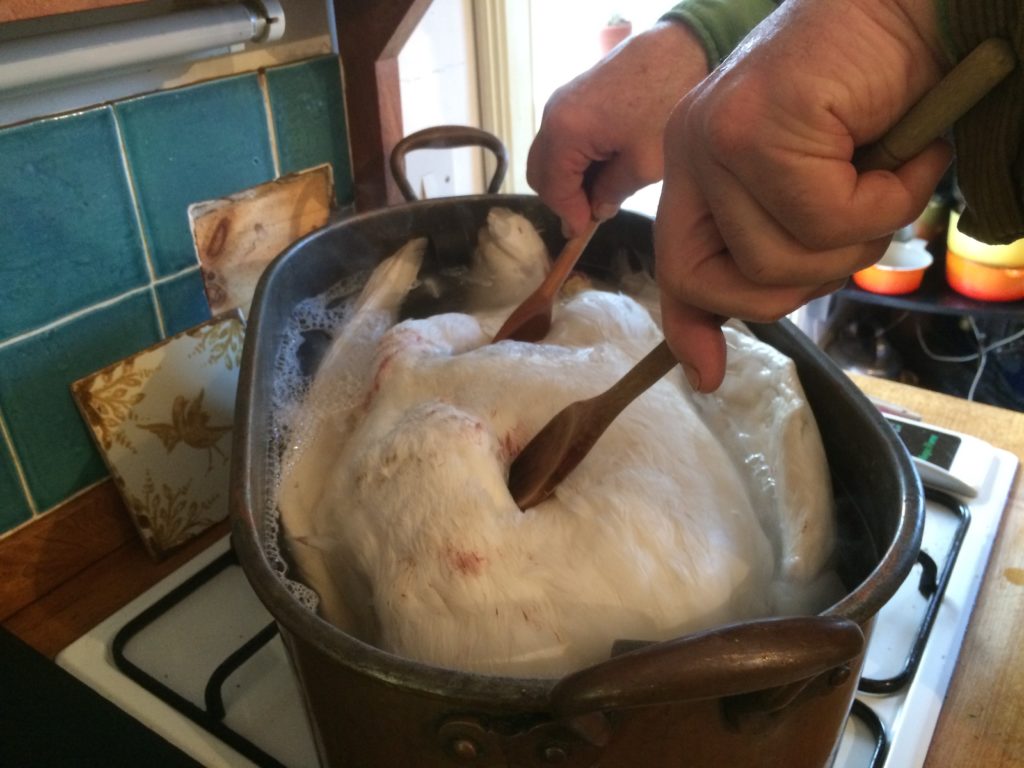
The geese were blanched in hot water to loosen the feathers.
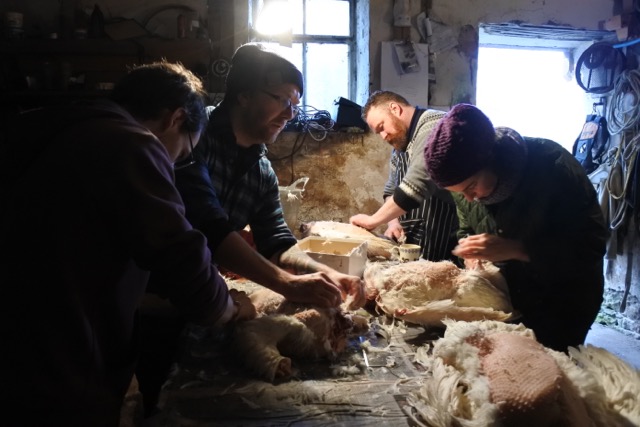
Plucking is an opportunity to catch up on the year and plan the feast to come.
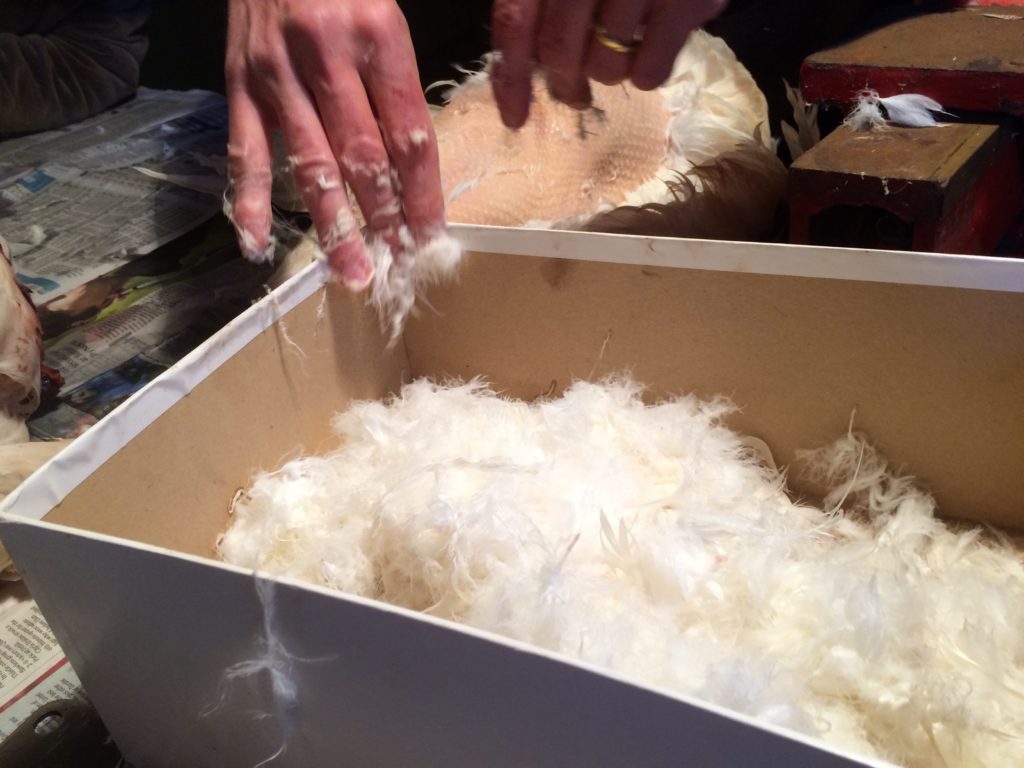
The down feathers beneath the wing and on the breast are incredibly soft and collected to be stuffed into ethical pillows. The wings are kept for quills. In the old days feathers were also used in arrows.

Gutting the geese. The liver makes a delicious pate that is much more ethical than foie gras, which is from force-fed geese. The guts are stripped of fat.
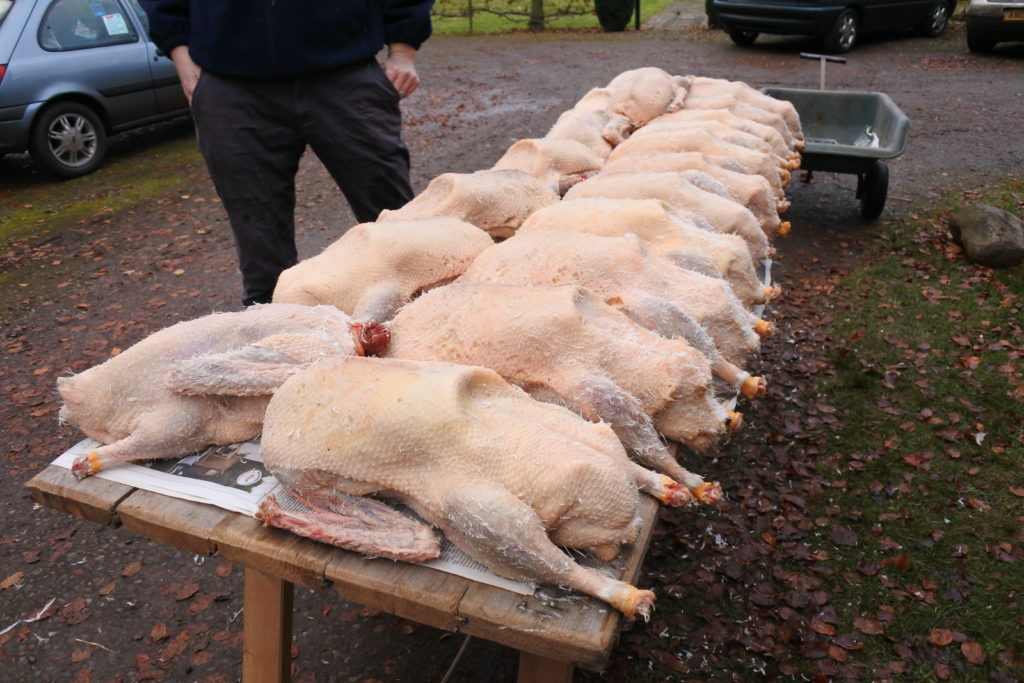
The biggest geese weighed in at around 4kg. Although there is not as much flesh as a turkey, it is tasty and succulent meat. Also the fat can be used for cooking for months to come and is a healthy alternative to other animal fats. The geese are worth £60 each but cost relatively little to raise at home. Much better than an intensively farmed turkey.
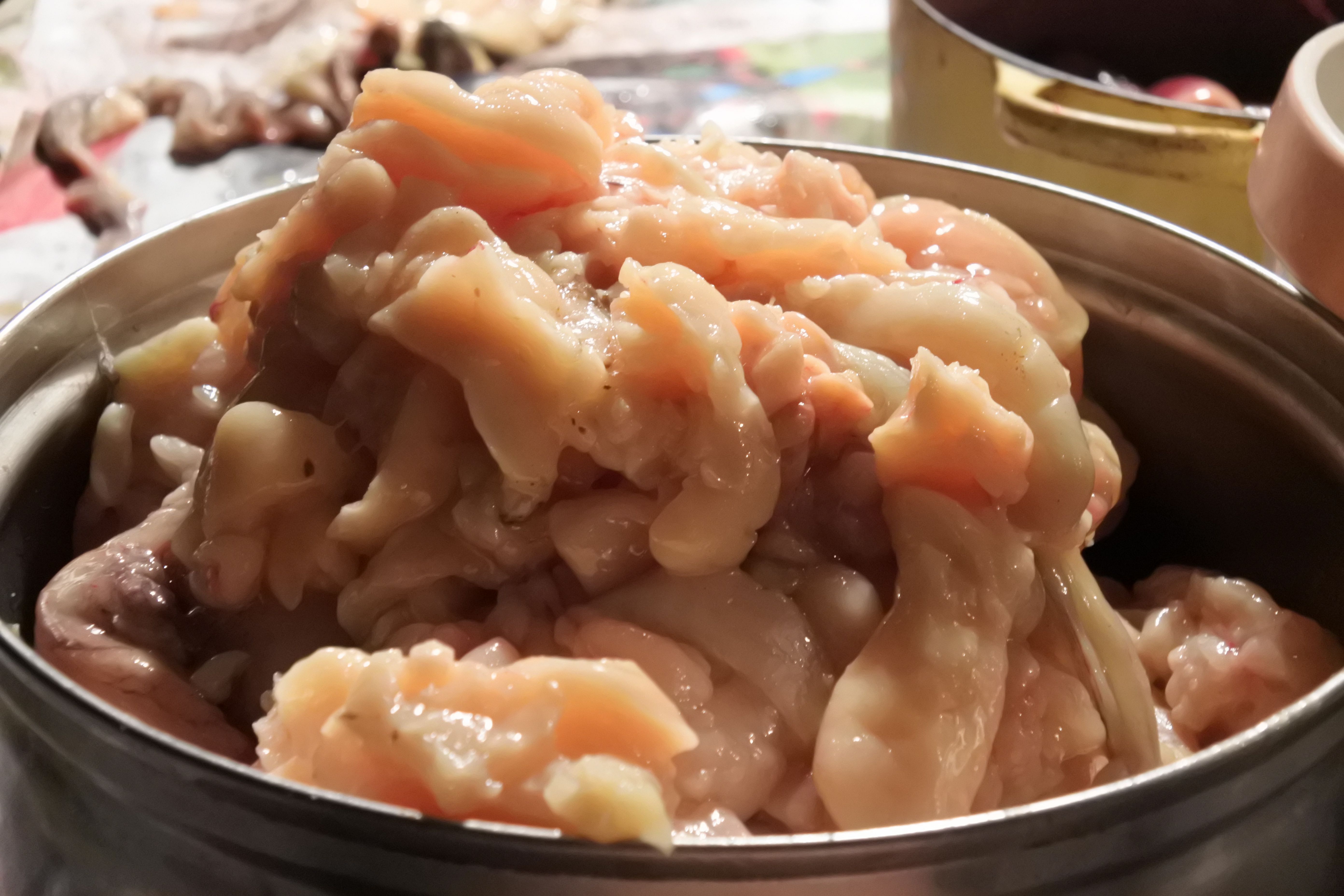
The glorious goose fat. Like Theresa May says, it makes the best roast potatoes.

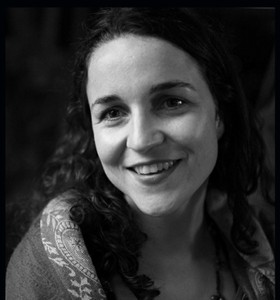
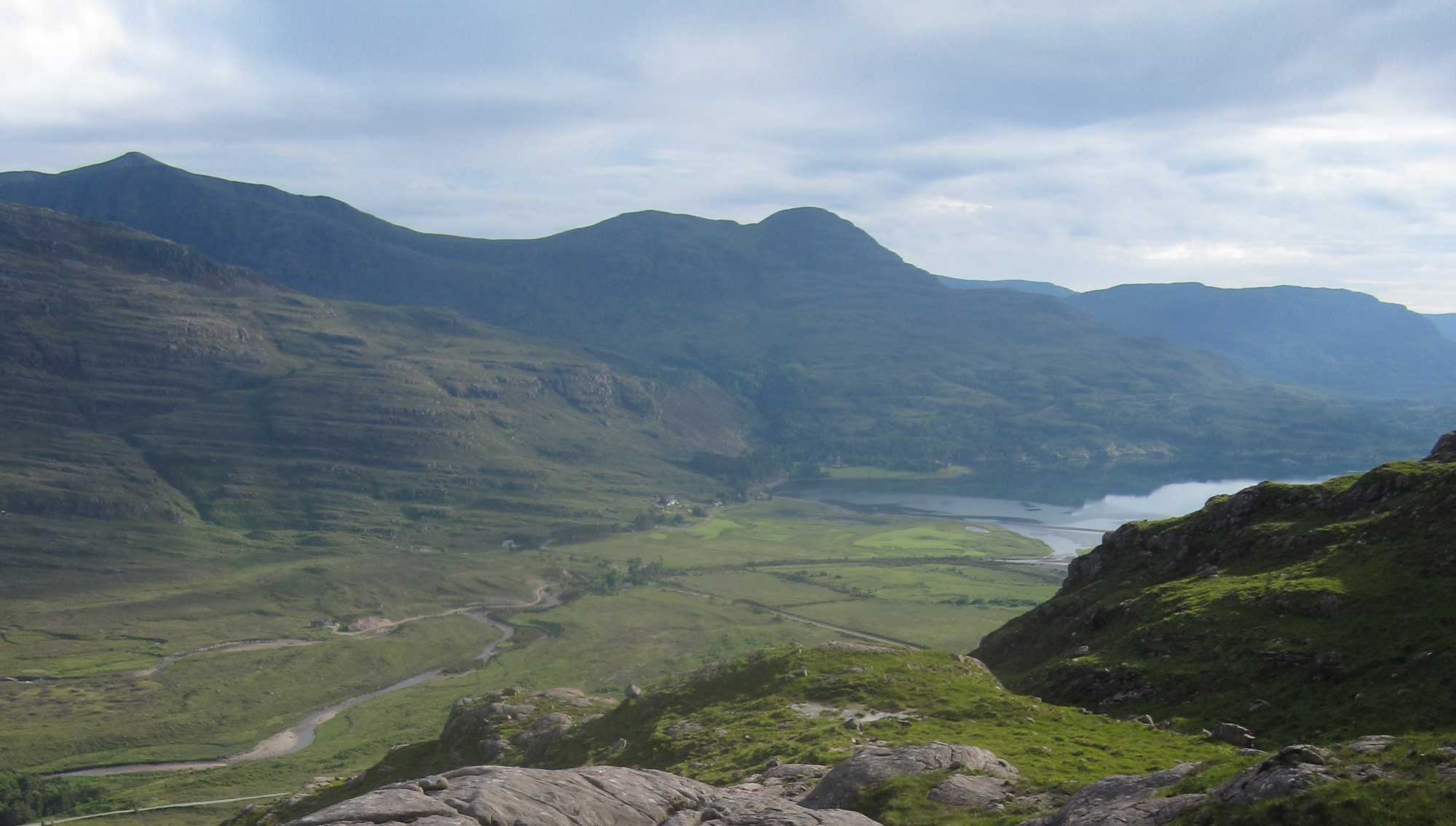
Love your very tidy pics of the plucking. We seem to get feathers, especially the down fluff EVERYwhere. They are easily my least favourite birds to pluck – I feel like we have to do it twice. Once for the ‘top-coat’ feathers and the bird is still just as white, needing the down layer taking off. Incidentally, re your comment about foie-gras being from force-fed geese (the evils of gavage!) have you seen that video presentation by Dan Barber (TED talks) about the non-gavage foie gras? https://www.ted.com/talks/dan_barber_s_surprising_foie_gras_parable
I have heard about that TED talk about the geese in Spain but need to watch it!! Will let you know…